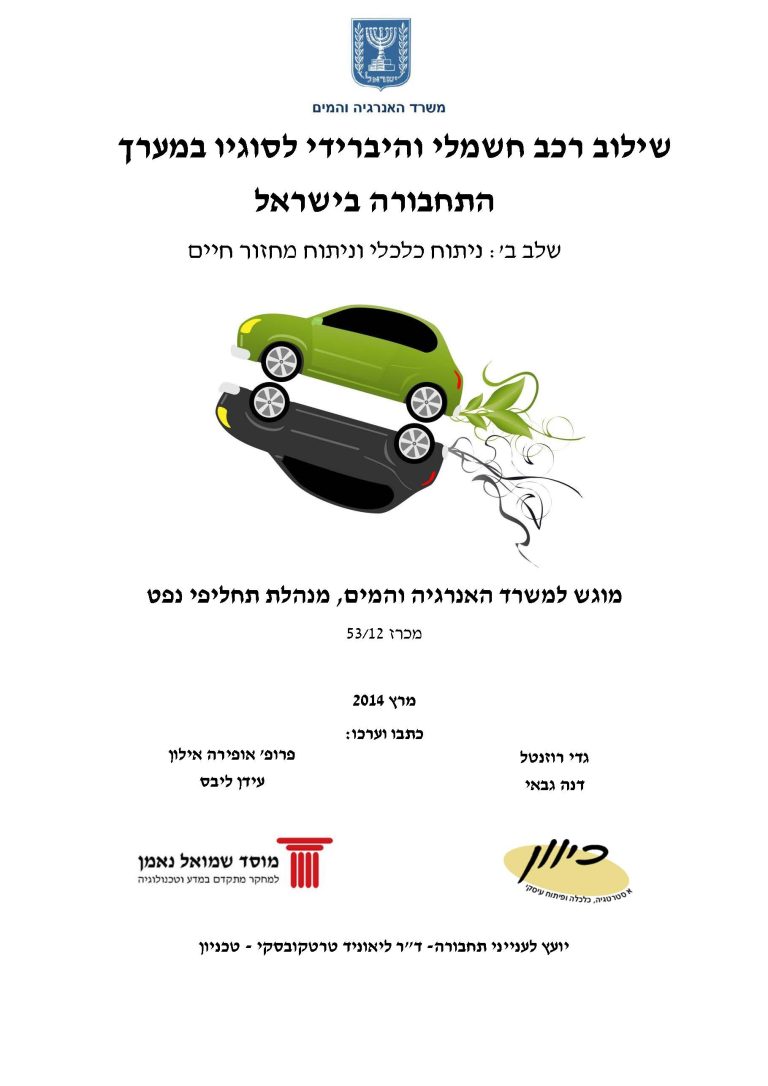The research was conducted for the Ministry of National Infrastructures, Energy and Water Resources.
The world’s transportation system is almost entirely based on oil-derived fuels, fed into internal combustion engines (ICE). Energy supply and demand markets – especially for transportation – are not economically unfettered and sustainable. According to the IEA, without targeted and active policies greenhouse gases and pollutants emissions from the energy sectors will more than double by 2050, all the while dealing with increasing fuels supply side difficulties and scarcity. The pathway to steer away from this future entails the dissemination of cleaner and more efficient transportation alternatives.
The need to reduce harmful emissions and reduce fossil fuels dependency drives significant policy and regulation efforts. These efforts, among others, have led to the development of alternative transportation technologies, which holds notable benefits in regards to fuel efficiency and reduced emissions. Electrical and hybrid vehicles are the bulk of the long-term solutions suggested by governments and lead research institutions.
The first part of this study is meant to provide a thorough literature review on the applicability of these drivetrain alternatives. The second part provides an initial economic analysis and life cycle assessment (LCA) of utilizing these technologies and solutions in Israel.
Under the base scenario it is concluded that ICE vehicles (the conventional alternative) have the lowest total cost of ownership (TCO) per kilometer-driven (sans taxes); accounting for costs of externalities does not changes the priorities under this scenario. The breakdown of ownership cost structure further emphasizes the cost disparity between electric drivetrain variants and the ICE in existing vehicle purchase prices. In addition, findings suggest that as the vehicle is more electric-based, costs of driving, maintenance and externalities diminish – both in absolute values, as well as their share in the TCO. As mileage increases, the advantages of electrical vehicles outweigh their shortcomings from the consumer’s perspective; as it turns out, plug-in hybrid electrical vehicles were found to have the highest TCO in most of the examined scenarios.












